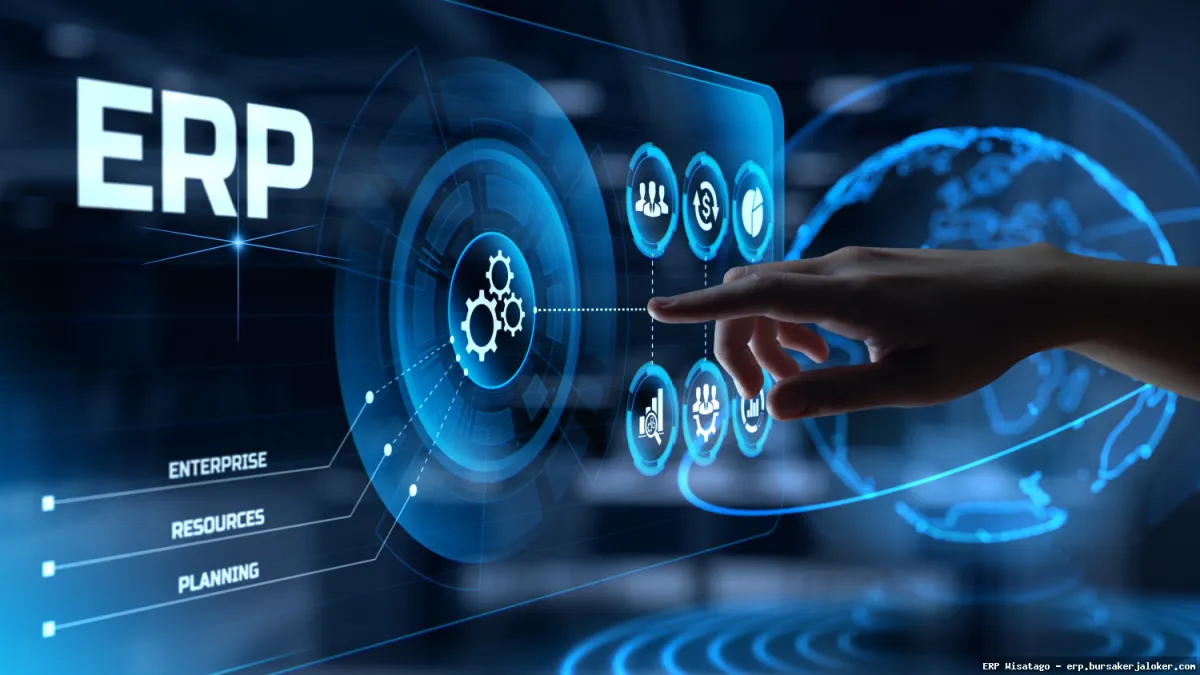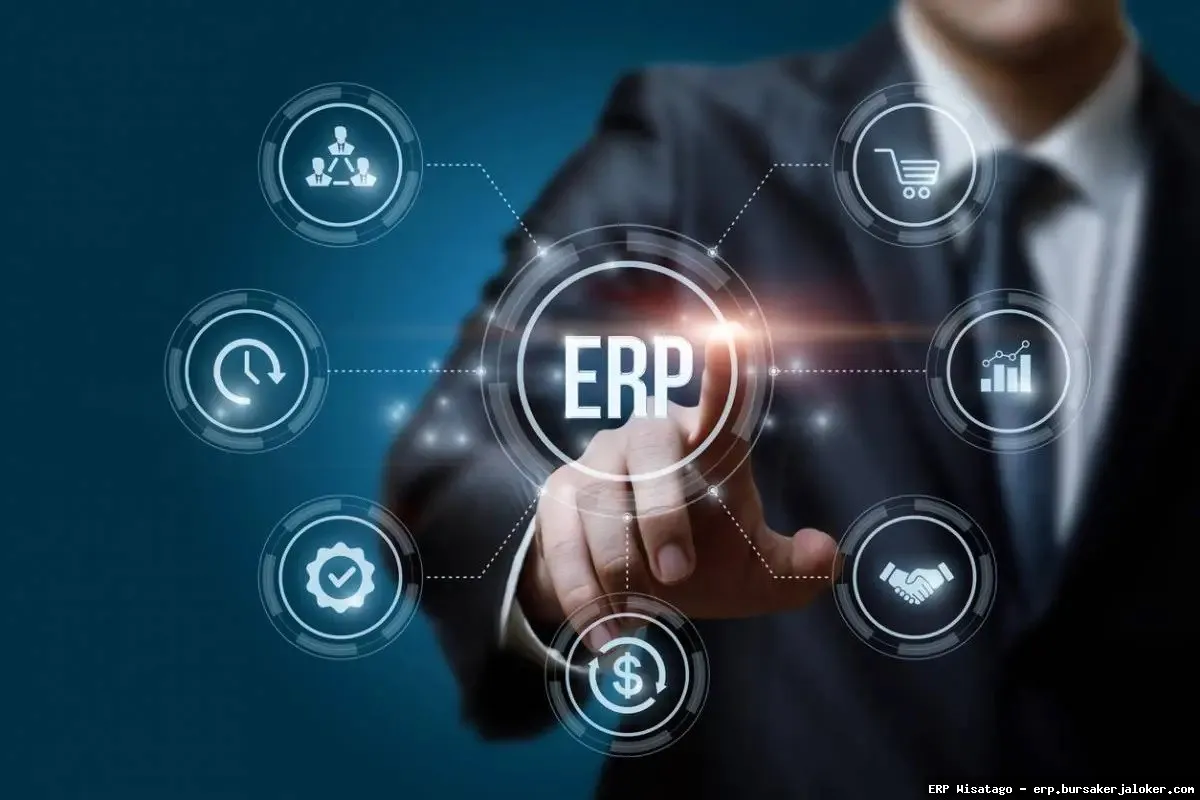Procurement, the process of acquiring goods and services, is a critical function for any organization. Efficient procurement directly impacts profitability, supply chain stability, and overall business performance. However, many companies struggle with fragmented processes, lack of visibility, and manual workflows in their procurement departments. This is where Enterprise Resource Planning (ERP) systems come into play, offering a comprehensive solution to streamline and optimize procurement management.
Implementing an ERP system for procurement isn’t just about automating tasks; it’s about transforming the entire procurement lifecycle. From initial requisition to final payment, an ERP system provides a centralized platform for managing suppliers, purchase orders, invoices, and contracts. This integration eliminates data silos, improves communication, and enables better decision-making based on real-time information. But choosing and implementing the right ERP for your specific procurement needs is a significant undertaking, and one that requires careful consideration.

In this guide, we’ll delve into the world of ERP for procurement management, exploring its key features, benefits, and implementation considerations. We’ll discuss the common challenges businesses face in procurement, how an ERP system can address them, and provide practical advice on selecting and deploying the right solution for your organization. This is based on my experience of implementing ERP systems, and the pain points and successes that I have seen businesses experience.
What is ERP for Procurement Management?
ERP for procurement management is a module or a suite of modules within a larger ERP system that specifically addresses the needs of the procurement department. It integrates all procurement-related activities into a single, unified system, allowing for seamless data flow and collaboration across different departments. Instead of using disparate systems for purchase orders, supplier management, and inventory tracking, all these functions are handled within the ERP.
Core Functionalities of ERP Procurement Modules
Here are some of the key functionalities you can expect from a robust ERP procurement module:
- Requisition Management: Automates the process of creating and approving purchase requisitions. Users can easily submit requests for goods or services, and the system routes them for approval based on pre-defined workflows.
- Supplier Management: Provides a centralized repository for supplier information, including contact details, performance ratings, contract terms, and pricing agreements. This allows for better supplier selection and relationship management.
- Purchase Order Management: Streamlines the creation, approval, and tracking of purchase orders. The system automatically generates POs based on approved requisitions and allows for electronic transmission to suppliers.
- Inventory Management: Tracks inventory levels in real-time, ensuring that sufficient stock is available to meet demand without overstocking. This often integrates with warehouse management systems.
- Invoice Processing: Automates the invoice matching and payment process, reducing errors and delays. The system compares invoices to purchase orders and receiving documents to ensure accuracy before payment.
- Contract Management: Manages contracts with suppliers, including terms and conditions, pricing, and expiration dates. The system can alert users when contracts are nearing expiration, allowing for timely renegotiation.
- Reporting and Analytics: Provides comprehensive reports and dashboards on procurement activities, allowing for better visibility and decision-making. This includes spend analysis, supplier performance monitoring, and cost savings tracking.
Benefits of Implementing ERP for Procurement
The benefits of implementing an ERP system for procurement are numerous and can significantly impact an organization’s bottom line. Here are some of the most significant advantages:
Improved Efficiency and Productivity
By automating manual tasks and streamlining workflows, an ERP system can significantly improve the efficiency and productivity of the procurement department. For example, automated purchase order creation and approval processes can reduce the time it takes to procure goods and services, freeing up procurement staff to focus on more strategic activities.
Enhanced Visibility and Control
An ERP system provides real-time visibility into all procurement activities, allowing for better control over spending and inventory levels. With access to accurate and up-to-date information, procurement managers can make more informed decisions and identify opportunities for cost savings.
Reduced Costs
By streamlining processes, improving supplier relationships, and negotiating better pricing, an ERP system can help reduce procurement costs. For example, spend analysis tools can identify areas where the company is overspending, allowing for targeted cost reduction initiatives.
Improved Supplier Relationships
A centralized supplier management system allows for better communication and collaboration with suppliers, leading to stronger relationships and improved performance. By providing suppliers with access to real-time information on demand and forecasts, companies can improve supplier responsiveness and reduce lead times.
Better Compliance and Risk Management
An ERP system can help ensure compliance with regulatory requirements and internal policies. For example, the system can automatically enforce spending limits and approval workflows, reducing the risk of fraud and non-compliance. It also provides an audit trail of all procurement activities, making it easier to track and trace transactions.
Data-Driven Decision Making
With comprehensive reporting and analytics capabilities, an ERP system empowers procurement teams to make data-driven decisions. Instead of relying on gut feelings or incomplete information, procurement managers can use data to identify trends, assess supplier performance, and optimize procurement strategies.
Common Challenges in Procurement and How ERP Solves Them
Many businesses struggle with various procurement-related challenges. Here’s how an ERP system can address some of the most common pain points:
Lack of Visibility
Challenge: Difficulty tracking spending, inventory levels, and supplier performance due to fragmented systems and manual processes. Knowing where your money is going and how well your suppliers are performing is critical for effective procurement.
ERP Solution: Provides a centralized platform for managing all procurement activities, offering real-time visibility into spending, inventory, and supplier performance. Dashboards and reports provide a comprehensive overview of key metrics, enabling better decision-making.
Inefficient Processes
Challenge: Manual and paper-based processes lead to delays, errors, and increased costs. Things like manual purchase order creation and invoice processing can be time-consuming and prone to mistakes.
ERP Solution: Automates key procurement processes, such as purchase order creation, approval workflows, and invoice matching. This reduces manual effort, minimizes errors, and speeds up the procurement cycle.
Poor Supplier Relationships
Challenge: Lack of communication and collaboration with suppliers leads to misunderstandings, delays, and missed opportunities for cost savings. Keeping suppliers informed and engaged is essential for building strong relationships.
ERP Solution: Facilitates better communication and collaboration with suppliers through a centralized supplier portal. Suppliers can access real-time information on demand, forecasts, and payment status, improving responsiveness and reducing lead times.

Difficulty Controlling Costs
Challenge: Inability to track and manage spending effectively, leading to overspending and missed opportunities for cost savings. Without clear visibility into spending patterns, it’s difficult to identify areas where costs can be reduced.
ERP Solution: Provides spend analysis tools that identify areas where the company is overspending. The system can also enforce spending limits and approval workflows, preventing unauthorized purchases and ensuring compliance with budget guidelines.
Lack of Compliance
Challenge: Difficulty ensuring compliance with regulatory requirements and internal policies, increasing the risk of fines and penalties. Staying up-to-date with regulations and ensuring adherence to internal policies can be a complex task.
ERP Solution: Automates compliance checks and enforces internal policies, reducing the risk of non-compliance. The system can also generate audit trails of all procurement activities, making it easier to demonstrate compliance to auditors.
Choosing the Right ERP System for Procurement
Selecting the right ERP system for your procurement needs is a critical decision that can significantly impact your organization’s success. Here are some key factors to consider:
Assess Your Needs
Before you start evaluating ERP systems, take the time to thoroughly assess your organization’s specific procurement needs. Identify your pain points, challenges, and goals. What are the key processes you want to automate? What kind of visibility do you need? What are your budget constraints?
Evaluate Features and Functionality
Make sure the ERP system you choose offers the features and functionality you need to address your specific procurement requirements. Consider the core functionalities mentioned earlier (requisition management, supplier management, purchase order management, etc.) and ensure that the system can handle your organization’s unique processes.
Consider Integration Capabilities
Ensure that the ERP system can integrate seamlessly with your existing systems, such as accounting, inventory management, and CRM. Integration is crucial for ensuring data consistency and avoiding data silos. APIs and pre-built integrations can simplify the integration process.
Evaluate Vendor Reputation and Support
Choose a reputable ERP vendor with a proven track record of success. Look for vendors that offer excellent customer support and training. Read reviews and talk to other customers to get a sense of the vendor’s strengths and weaknesses. A responsive and knowledgeable support team is essential for a successful implementation.
Consider Cloud vs. On-Premise Deployment
Decide whether you want to deploy the ERP system in the cloud or on-premise. Cloud-based ERP systems offer several advantages, including lower upfront costs, easier deployment, and automatic updates. However, on-premise systems may be a better choice for organizations with specific security or compliance requirements.
Think About Scalability
Choose an ERP system that can scale with your organization as it grows. The system should be able to handle increasing transaction volumes and support new users and locations. A scalable system will protect your investment and avoid the need for a costly replacement in the future. For more information, you can refer to RMM as an additional resource.
Implementation Considerations
Implementing an ERP system is a complex project that requires careful planning and execution. Here are some key considerations for a successful implementation:
Define a Clear Scope and Objectives
Clearly define the scope of the implementation and set realistic objectives. Start with a pilot project to test the system and refine the implementation plan. Avoid trying to do too much at once. A phased approach can help minimize disruption and ensure a smoother transition.
Assemble a Dedicated Implementation Team
Assemble a dedicated implementation team with representatives from all key departments, including procurement, IT, and finance. The team should be responsible for planning, executing, and monitoring the implementation project. Strong leadership and communication are essential for success.
Provide Adequate Training
Provide adequate training to all users on the new ERP system. Training should be tailored to the specific roles and responsibilities of each user. Offer ongoing support and training to help users adapt to the new system and maximize its benefits.
Data Migration
Plan and execute a comprehensive data migration strategy. Ensure that all relevant data is migrated from your existing systems to the new ERP system accurately and completely. Data cleansing and validation are critical for ensuring data quality.
Change Management
Implement a change management plan to help employees adapt to the new system and processes. Communicate the benefits of the ERP system and address any concerns or resistance to change. Employee buy-in is essential for a successful implementation.

Go-Live and Post-Implementation Support
Plan the go-live process carefully and provide adequate post-implementation support. Monitor the system closely after go-live to identify and address any issues. Continue to provide training and support to users to ensure they are using the system effectively.
Conclusion
ERP for procurement management offers a powerful solution for organizations seeking to streamline and optimize their procurement processes. By automating tasks, improving visibility, and enhancing supplier relationships, an ERP system can help reduce costs, improve efficiency, and drive better business outcomes. However, choosing and implementing the right ERP system requires careful planning, execution, and ongoing support. By following the guidance outlined in this article, you can increase your chances of a successful ERP implementation and unlock the full potential of your procurement department.
Frequently Asked Questions (FAQ) about ERP for procurement management
What are the key benefits of using an ERP system for procurement management, and how does it improve the purchasing process?
Implementing an ERP (Enterprise Resource Planning) system for procurement management offers numerous benefits that streamline and optimize the entire purchasing process. One key advantage is improved visibility. An ERP system centralizes all procurement-related data, providing a single source of truth for inventory levels, supplier information, purchase orders, and contracts. This enhanced visibility allows for better decision-making and helps to identify potential bottlenecks or inefficiencies. Furthermore, ERP systems facilitate automation of routine tasks like purchase order generation and invoice processing, reducing manual errors and freeing up procurement staff to focus on strategic activities such as supplier negotiations and value engineering. Cost savings are also a significant benefit, achieved through better spend management, improved inventory control, and optimized supplier relationships. Finally, enhanced compliance with regulatory requirements and internal policies is ensured through standardized workflows and audit trails within the ERP system.
How can an ERP system help with supplier relationship management (SRM) and improve collaboration with vendors during the procurement process?
An ERP system plays a crucial role in enhancing Supplier Relationship Management (SRM) by providing tools and functionalities that promote better collaboration and communication with vendors. The system offers a centralized platform for managing all supplier-related information, including contact details, performance metrics, contracts, and communication history. This allows procurement teams to easily access and analyze supplier data, leading to more informed decisions. Specifically, ERP systems often include features for supplier performance monitoring, enabling businesses to track key indicators like delivery times, quality, and pricing. This data helps in identifying top-performing suppliers and addressing any issues with underperforming ones. Furthermore, many ERP solutions offer supplier portals, which provide vendors with secure access to relevant information, such as purchase orders, invoices, and payment status. This self-service functionality reduces the need for manual communication and improves transparency. Ultimately, an ERP system fosters stronger and more collaborative supplier relationships, leading to better terms, improved service, and reduced risks.
What are the essential features to look for when choosing an ERP system specifically for procurement management in a manufacturing company?
When selecting an ERP system for procurement management in a manufacturing company, several key features are essential. Firstly, robust material requirements planning (MRP) functionality is crucial. This allows the system to accurately forecast demand, manage inventory levels, and generate purchase orders based on production schedules. Secondly, supplier management capabilities are vital. This includes features for supplier onboarding, performance evaluation, contract management, and communication. Thirdly, a strong purchase order management module is needed to automate the creation, approval, and tracking of purchase orders. This module should integrate seamlessly with other modules, such as inventory management and accounts payable. Fourthly, inventory control features are necessary to optimize stock levels, reduce carrying costs, and prevent stockouts. Fifth, analytics and reporting tools are essential for monitoring procurement performance, identifying cost-saving opportunities, and making data-driven decisions. Finally, ensure the ERP system integrates well with existing systems, such as accounting and warehouse management systems, to ensure a seamless flow of information across the organization.
